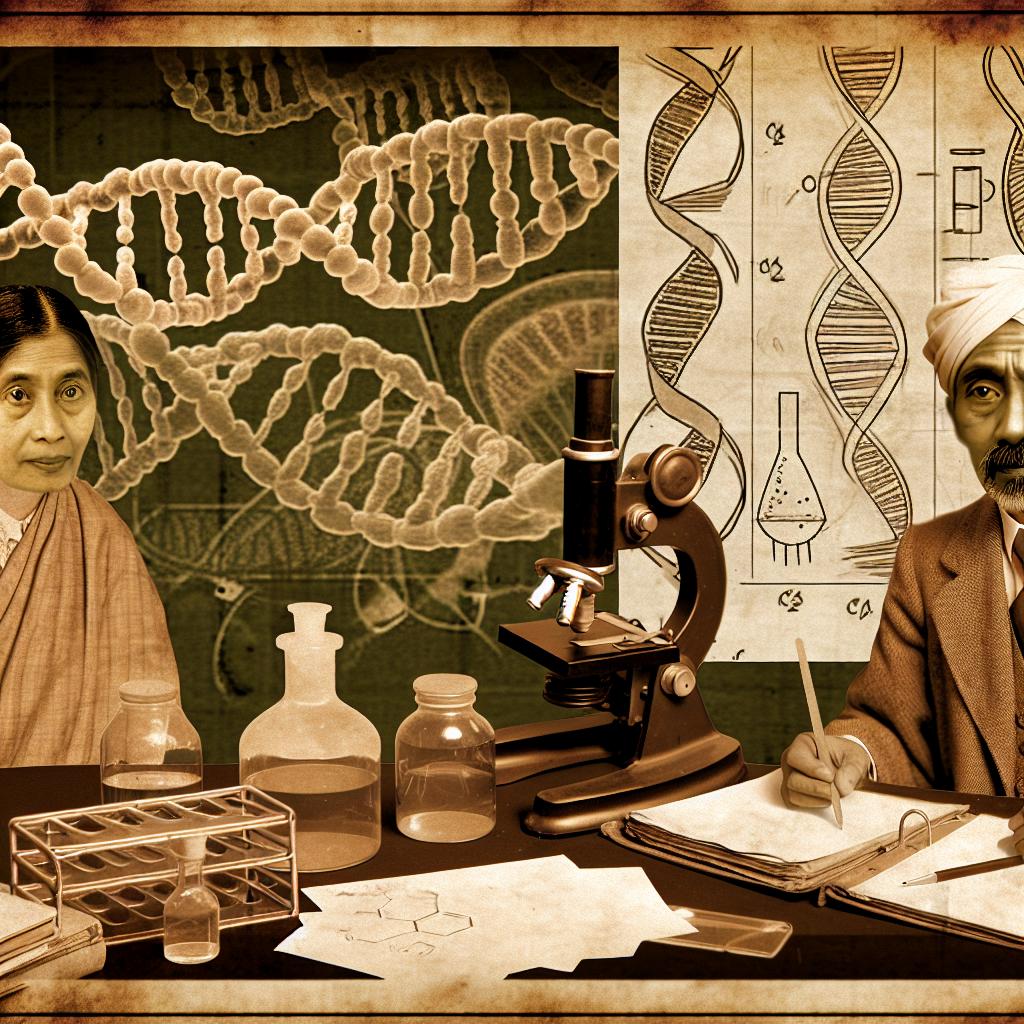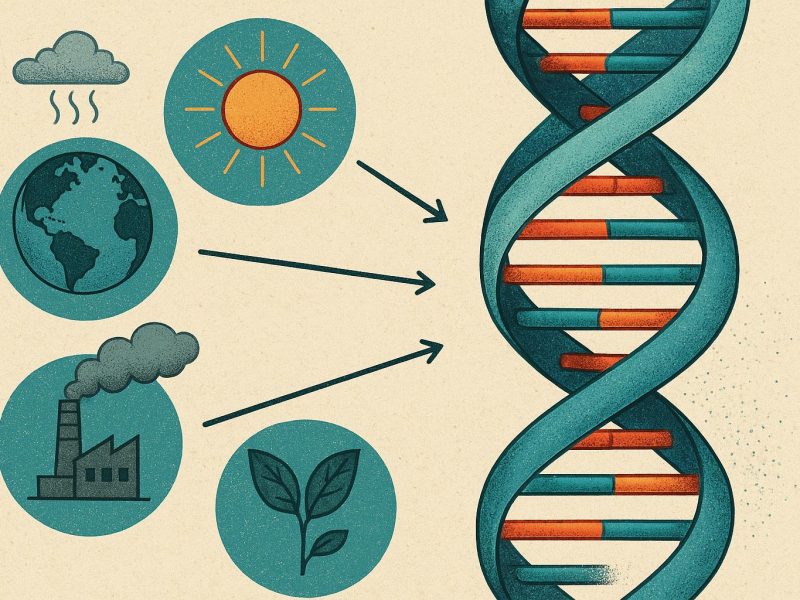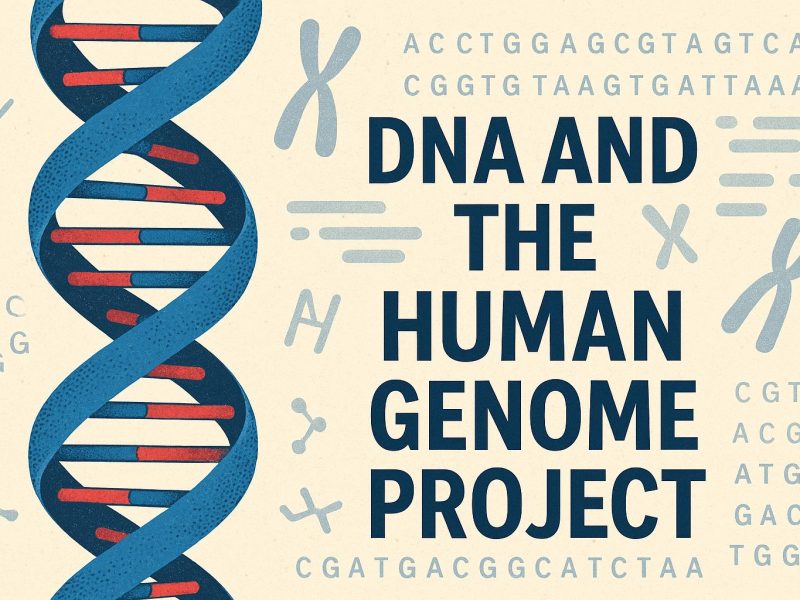The Discovery of DNA’s Structure
The elucidation of the DNA structure by James Watson and Francis Crick in 1953 stands as a pivotal moment in the field of molecular biology. This breakthrough provided crucial insights into the genetic code that dictates the biological functions of organisms. Their discovery has implications far beyond their time, serving both as a cornerstone for genetic research and a catalyst for subsequent scientific advancements.
The Initial Stages
In the early 1950s, the scientific community was aware of the significance of DNA, but its structure remained unclear. Various researchers, including Maurice Wilkins and Rosalind Franklin at King’s College London, were intensively studying DNA using X-ray crystallography. This methodology allowed researchers to discern the three-dimensional shape of molecules by observing the patterns created when X-rays are diffracted through a crystal form of the molecule. The data collected by Wilkins and Franklin was critical, as they accumulated an array of X-ray images that documented the repetitive forms characteristic of DNA fibers. These images became fundamental to understanding the molecular structure of DNA.
Rosalind Franklin’s contribution to the study of DNA cannot be overstated. Her meticulous attention to acquiring clear X-ray images enabled a pivotal leap in the journey toward unraveling DNA’s structure. Her efforts resulted in enhanced X-ray diffraction patterns, which are now celebrated for their clarity. This work was crucial in capturing the ‘Photo 51’, an image that would later prove instrumental in unraveling the helical structure of DNA.
Watson and Crick’s Contribution
Working at the University of Cambridge, Watson and Crick utilized existing scientific data and theoretical insights to piece together the puzzle of DNA’s structure. The duo cleverly integrated model-building techniques, drawing from a broad base of existing research on nucleotide chemistry and structural geometry. Their key achievement was the proposition of the DNA model as a double helix, consisting of two intertwined strands. Through shrewd analysis and synthesis of the data available, they identified a model adaptable enough to account for both known chemical properties and the burgeoning understanding of genetic principles.
Base Pairing Mechanism
An essential aspect of the Watson-Crick model was how the two strands of the helix were held together. They proposed that the nucleotides adenine (A) and thymine (T), as well as cytosine (C) and guanine (G), formed specific base pairs through hydrogen bonds. This base pairing mechanism was not merely structural; it provided a plausible method for replication. The insight that each strand of the DNA helix could serve as a template for a new, complementary strand explained how genetic information could be faithfully transmitted from one generation to the next. This understanding became set foundational for much of the genetic research that followed, underpinning the disciplines of genetics and molecular biology.
The Role of Rosalind Franklin
Rosalind Franklin’s X-ray diffraction images of DNA, particularly the famous Photo 51, were critical to the development of the double helix model. Her keen scientific rigor and ability to achieve improved image clarity through refined laboratory technique were indispensable. Despite being less recognized during her lifetime and not sharing the limelight alongside Watson, Crick, and Wilkins when the Nobel Prizes were awarded, her contributions are now rightly acknowledged as fundamentally important to the discovery. Franklin’s legacy is a reminder of the collaborative nature of scientific breakthroughs and the complex tapestry of individual efforts and contributions that weave significant scientific advancements.
Publication and Impact
The model proposed by Watson and Crick was published in the journal Nature in April 1953. This publication signaled a monumental leap forward in the sciences. Complementary papers by Wilkins and Franklin’s research group accompanying the publication provided a comprehensive understanding of DNA’s structure. The rapid acceptance and recognition of their model underscored the transformative impact of their discovery. This new understanding of DNA as a repository of genetic information catalyzed a series of revolutionary changes within biological sciences, heralding a new era marked by rapid strides in genetic research. This discovery laid the foundation for advancing fields such as genetic engineering and biotechnology, leading to avenues once considered speculative, such as the Human Genome Project and CRISPR genetic editing technologies.
Nobel Prize and Aftermath
In 1962, James Watson, Francis Crick, and Maurice Wilkins were awarded the Nobel Prize in Physiology or Medicine for their groundbreaking work elucidating the molecular structure of nucleic acids. The absence of Rosalind Franklin from this accolade has been a subject of ongoing discussion, highlighting broader issues surrounding recognition in scientific achievements. Although posthumous awards are not part of Nobel Prize tradition, Franklin’s contributions continue to receive acknowledgment from historians and scientists, cementing her rightful place in the chronicles of scientific discovery. The debate prompted by Franklin’s exclusion has served as a catalyst for ongoing dialogues concerning gender equity and recognition within science.
For more information, you can read about the [Nobel Prize in Physiology or Medicine 1962](https://www.nobelprize.org/prizes/medicine/1962/summary/), where details about the awards and their significance are provided.
Conclusion
The discovery of the DNA double helix by Watson and Crick, with contributions from Franklin and Wilkins, revolutionized the life sciences. It laid the groundwork for subsequent research in genetics, resulting in transformative insights and technologies that continue to shape our understanding of biology today. This breakthrough stands as a testament to scientific curiosity, collaboration, and perseverance. As we continue to explore and expand upon this foundational knowledge, the initial elucidation of DNA’s structure remains a critical beacon guiding ongoing scientific inquiry and innovation. The implications of this discovery continue to resonate across multiple scientific disciplines, defining a trajectory toward even greater discoveries in genetic research.



